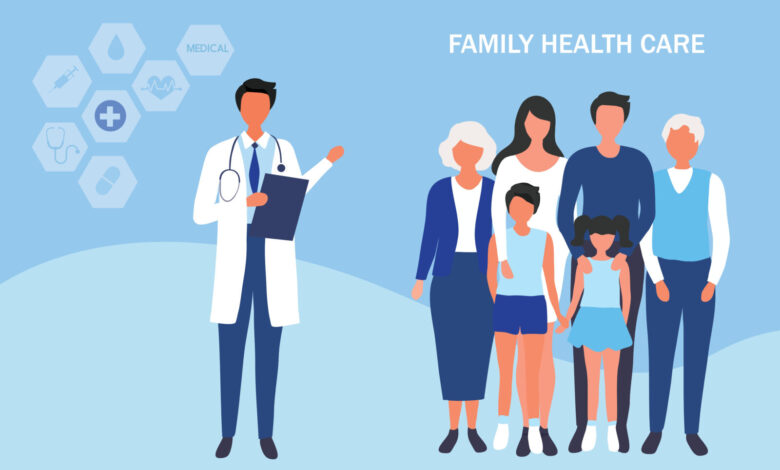A WEEK AS AN AVERAGE FAMILY PHYSICIAN

Family Physicians are the “Jack-of-all-trades” of physicians. They focus on disease prevention, the overall coordination of care, provide a wide variety of clinical services, advocate for their patients, and refer to specialists when the need arises. They do a little of everything asked of a doctor.
Following the “Jack-of-all-trades” phrase is usually the quip, “Master-of-none.” I REFUSE TO SAY THAT because the Family doctor is responsible for, and involved in, every aspect of a patient’s care. He/she is the person chosen by the patient to take care of any development that occurs individually or within the entire family. The family doctor, at least in the eyes of patient’s who trust and respect him/her, is the one designated to have the final word. They are the person when patients ask “What did Dr. G say about the situation?”
To further elaborate on the role Family Physicians play in the primary care world, the American Academy of Family Physicians in Leawood, Kansas, and its Washington, D.C. Office conducted a survey to get a picture of what today’s “average family physician” does in one week. The survey answers differ greatly from those of family physicians of the 1970’s, ‘80’s, and ‘90’s, the decades of peak practice activity for me. A comparison of today’s family physician activities to those of myself and my contemporaries is what follows.
The first, and most obvious difference, is the modern survey covers only activities done Monday through Friday. It appears as if today’s average FP has every weekend off. Saturday and Sunday were omitted from the week’s activities. FP’s in my early career had some kind of practice activity seven days a week. It was an everyday, all day and all night job.
Today’s FP sees an average of 65 patients a week in the office. That’s an average of 13 per day. For contrast, I was in the office all day Monday, Tuesday, Wednesday, and Friday, and half day on Thursday, and every other Saturday. On a full day I saw 30 to 36 patients, total. Thursday I would see 10-12 and Saturday 10-15. That totals between 140 and 170 patients a week. I could not have paid the office rent seeing 65 patients a week.
In early practice days, I made hospital rounds 7 days a week. The survey claims today’s doctors do, too, but I don’t know of any. I had anywhere from 5 to 15 patients in the hospital most days, and I made rounds on them daily. I don’t know how many inpatients today’s FP sees, but I think rural practitioners are more likely to see hospital patients than urban or suburban physicians.
Nursing home visits were another activity in the survey. Today’s doc makes three nursing home visits a week. I sometimes went to three nursing homes the same day. I averaged seeing between 2 to 5 patients each visit. My first year in practice I made the mistake of taking on 25 Medicaid patients at one facility. That nearly killed me, so I only took care of them for just a few months. My nursing home weekly average was probably 5 to 8 visits. It was a killer.
House calls by today’s docs according to this survey average one per week. I seriously doubt the accuracy of that figure. It just ain’t true (unless rural MD’s are included). When’s the last time you heard of a doctor making a house call. BUT in my day I really did average about 3-5 a month. House calls are very unproductive and purely a social activity to check on the accuracy of a situation claimed by the family or to appease a disgruntled of disagreeable family member. It’s an inefficient means of diagnosis and treatment because one cannot possibly be prepared for anything one might encounter. And surprises happened frequently. House calls became mostly an exercise in triaging the patient.
Last, is the ridiculous concept of e-visits, or telemedicine! Has that concept not died yet? I desperately hope so. What a ruse. Some communications entrepreneur convinced a frightened public, and wimpy doctors that COVID-19 was going to kill all of us. The survey referred to says FP’s still make 8 e-visits a week. It should be zero. I vehemently disagree with telemedicine and the egregious impression patients get of doctors hiding behind their computers. There is no way in the world, heaven, or elsewhere a doctor can diagnose a patient over the phone. It’s negligence and borderline dereliction of responsibility to the patient. STOP TELEMEDICINE, NOW!
Well, now that the doctor works a 5-day week, sees a lot fewer patients, and has Saturdays and Sundays off, he should be a happy camper! I’m sorry to report, though, he/she is not. According to Medical Economics, burnout is rampant. The reputation and prestige of doctors is dwindling, rapidly. The person you see in the office, ER, or immediate care center is no longer a doctor. You’re seeing a “pretend doctor,” a physician’s assistant or nurse practitioner; someone with a fraction of the training, knowledge and experience of an MD.
Today’s FP’s are mostly salaried hospital or large multi-specialty group employees. What private practice physicians receive as payment for services can no longer sustain a practice financially. You cannot pay overhead and yourself with what Medicare and commercial payers pay. It’s impossible.
So things are different today. Doctors work less, see fewer patients, have more free time, and get paid little or nothing. Physician attitude and work ethic have changed greatly, too. Until the mid 1990’s, family physicians were paid fairly, but made nowhere near what specialists made. Specialists made too much. Then it all changed and evolved into what we have today—unhappy physicians and primary care practiced by non-MD’s. Unfortunately, I think this system is here to stay unless total government control of healthcare is legislated.
The AAFP survey is enlightening and a bit disappointing. Today’s doctors aren’t in it to develop a relationship with their patients. They like being called doctor, but don’t practice with the dedication they should. It’s a 9-5 job with a guaranteed paycheck. Seeing only 13 patients a day you can’t get rich, certainly. But you also cannot avoid bankruptcy unless you’re sharing expenses with some deep hospital or corporate pockets.
I don’t know where this is all going, but it appears to be down and not up!
Reference: “The Importance of Family Medicine in Indiana” Frontline Physician Spring 2023:8.




